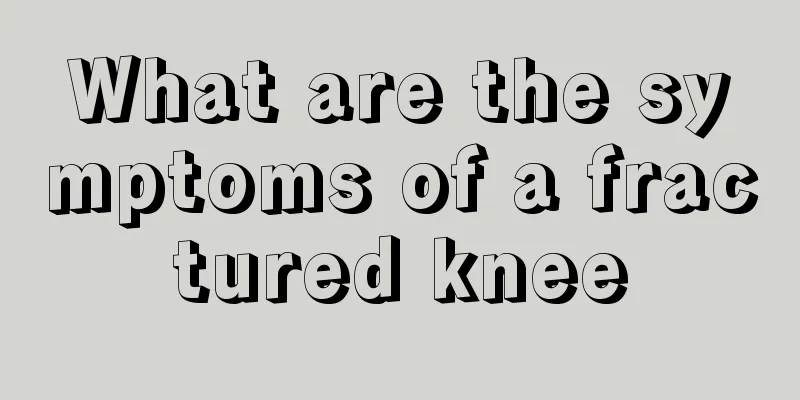What is the treatment for cerebral artery embolism?

|
As we all know, cerebral artery embolism is very harmful to human health. It can easily cause symptoms such as hemiplegia, hemiplegia, slurred speech, etc., seriously affecting the physical and mental health of patients. So what is the treatment for cerebral artery embolism? In fact, there are ten methods. First, you should stay in bed and remain calm. 1. General treatment ① Bed rest and sedation. ② Maintain airway patency and heart function. ③Pay attention to nutritional status and maintain the balance of water and electrolytes. ④ Strengthen nursing care to prevent complications such as pneumonia, urinary tract infection and bedsores. 2. Dehydration reduces intracranial pressure It is one of the main measures for treating cerebral embolism, aiming to reduce cerebral edema, prevent brain herniation, and reduce mortality. Commonly used are hypertonic dehydrating agents, diuretics and cortical hormones. 3. Vasodilators Vasodilators are contraindicated if there is impaired consciousness, increased intracranial pressure or red blood cells in the cerebrospinal fluid; they should not be used if the disease has lasted for more than 24 hours or if there is heart failure. 4. Antiplatelet aggregation agents Preventing platelet aggregation helps prevent the formation of new blood clots in the heart and prevents blood clots in blood vessels from continuing to proliferate and expand. Therefore, it is important to use antiplatelet agents after a cerebral embolism occurs. 5. Anticoagulation and thrombolytic therapy The indications for anticoagulation and thrombolytic therapy are stricter than those for atherosclerotic cerebral infarction. Considering that thrombolytics are prone to bleeding complications, they should be used with caution. Since cardiogenic cerebral embolism is the most common clinical cause, anticoagulant therapy is often used to prevent the formation of new thrombi in the heart to eliminate the source of thrombi, and to prevent the thrombi or parent thrombi in the cerebral blood vessels from continuing to grow in order to avoid the expansion of the scope of cerebral infarction. It is contraindicated in cases of cerebral embolism caused by inflammatory lesions, such as subacute infective endocarditis. Usually, under the condition of strict observation of blood coagulation time, prothrombin activity and time, heparin calcium (low molecular weight heparin) is given first for treatment. Neoselenolide can also be used, and the dosage should be adjusted at any time. 6. Cervical stellate sympathetic ganglion blockade Some experts suggest that cervical stellate ganglion blockade can alleviate the symptoms of cerebral embolism. It is easy to operate and does not require special equipment or drugs, so it is often used. However, treatment should be carried out early. The earlier it is started, the better the effect will be. Clinically, it is common to see significant improvement within 24 hours of onset of the disease. It is contraindicated for patients with severe emphysema and should not be used if the patient has started anticoagulant treatment. 7. Neuroprotective Agents Commonly used neuroprotective agents include: ① calcium channel blockers; ② excitatory amino acid receptor antagonists; ③ free radical scavengers; ④ neurotrophic factors; ⑤ gangliosides, etc. 8. Hypothermia treatment In the acute phase, if conditions permit, appropriate early hypothermia treatment may be considered. Mild hypothermia also has a positive effect on ischemic brain damage. It not only reduces the degree of pathological damage after infarction, but also promotes the recovery of neurological function without causing serious complications. Try to give it within 6 hours of onset. 9. Rehabilitation Starting early, after the condition stabilizes, actively educate patients on rehabilitation knowledge and general training methods, encourage patients to build confidence in regaining self-care, cooperate with medical and rehabilitation work, strive for early recovery, and at the same time assist with acupuncture, massage, physical therapy, etc. to reduce the disability rate and improve the quality of life. 10. Other treatments ① Adjust blood pressure; ② Brain metabolism activator; ③ Anti-infection treatment; ④ Gas embolism treatment. |
<<: What are the symptoms of limb arterial embolism?
>>: What is lower extremity thromboangiitis obliterans?
Recommend
Does having sex every day affect sperm?
If you want to increase the success rate of pregn...
What should I do if my stomach feels uncomfortable after motion sickness?
With the improvement of living standards, cars ar...
Dimethyl sulfoxide
Many people think that dimethyl sulfoxide is a ma...
Reasons for puffy face after waking up
Many people will experience swollen eyes after wa...
What is the effect of ceramide on the skin
The skin care products and cosmetics we often use...
What are the effects of ancient brown sugar?
Sugar is one of the most important substances in ...
Early symptoms of throat cancer in women
Although the early symptoms of female throat canc...
What are the symptoms of common warts
Common warts are a benign tumor infected by a vir...
How many weeks of pregnancy can be checked by B-ultrasound
B-ultrasound is a very good technology for hospit...
Is it harmful to dye your hair occasionally?
Love of beauty is a common trait of many people. ...
What harm does enhanced CT do to the human body
We are all familiar with CT. It is usually done f...
Right coronary artery branches
The main branches of the right coronary artery in...
Early symptoms of lung cancer
The early symptoms of lung cancer are usually mil...
What are the ways breast cancer metastasizes
Breast cancer metastasis includes the following w...
Hemoglobin 171
Hemoglobin is a relatively common element that ca...









